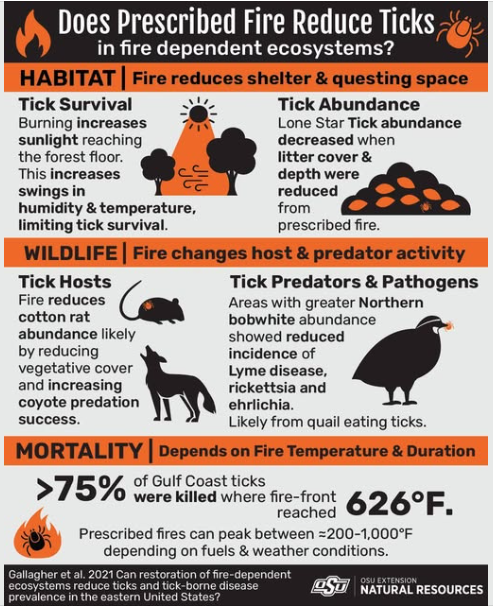
HABITAT | Fire reduces shelter & questing space
Tick Survival: Burning increases sunlight reaching the forest floor. This increases swings in humidity & temperature, limiting tick survival.
Tick Abundance: Lone Star Tick abundance decreased when litter cover & depth were reduced from prescribed fire.
WILDLIFE | Fire changes host & predator activity
Tick Hosts: Fire reduces cotton rat abundance likely by reducing vegetative cover and increasing coyote predation success.
Tick Predators & Pathogens: areas with greater Northern Bobwhite abundance showed reduced incidence of Lyme disease, rickettsia & ehrlichia. Likely from quail eating ticks.
MORTALITY | Depends on Fire Temperature & Duration
>75% of Gulf Coast ticks were killed where fire-front reached 626°F.
Prescribed fires can peak between 200 – 1,000°F depending on fuels & weather conditions.
Gallagher et al 2022 Can restoration of fire-dependent ecosystems reduce ticks and tick-borne disease prevalence in the eastern United States? https://doi.org/10.1002/eap.2637


















